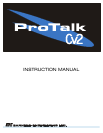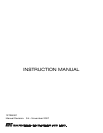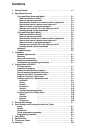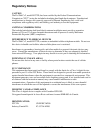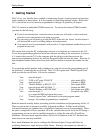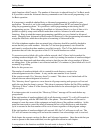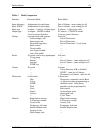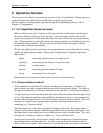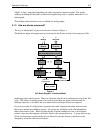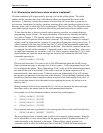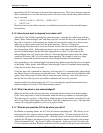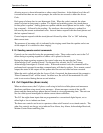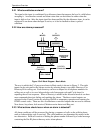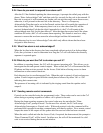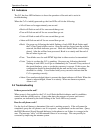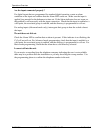
Getting Started 1-2
B1272M001
BARNETT ENGINEERING LTD. ProTalk Cv2
single function called Controls. The number of directories is reduced from 6 to 2 in Basic mode.
It is possible to retain the Advanced directory commands even if the overall programming is set
for Basic operation.
It is important to establish whether Basic or Advanced programming is suitable for your
application. The mode is set by the configuration uploaded from the PC and cannot be altered
using the programming phone. It is possible to switch programming modes during the PC
programming session. When changing from Basic to Advanced there is no loss of data so it is
possible to quickly setup a unit in Basic mode then switch to Advanced to add some extra
functions. Keep in mind that remote programming capabilities are very limited in Advanced
mode. Changing from Advanced to Basic mode will destroy all of the programming information
except the directories which have the option of remaining in Advanced mode.
All of the telephone numbers that are entered into a directory should be carefully checked to
ensure that they are valid numbers. After the Cv2 has been programmed, a test should be
performed to confirm that these numbers are called correctly. The Cv2 has built-in network
protection that will alter the operation of the Cv2 if invalid numbers are called.
To prevent excessive failed calls on the cellular network, the Cv2 has a built-in method for
counting unacknowledged calls. This process works by counting the number of unacknowledged
calls that have been made and then taking action to alert the user that a large number of failures
are taking place. If the problem is not corrected and the Cv2 continues to place failed calls it will
eventually stop calling.
Rules for this process are:
The number of unacknowledged calls is counted for each directory; receipt of an
acknowledgment resets the counter. A retry on the same number is not counted.
If the counter exceeds 50 a “directory alarm” is created. This alarm is not latched and will be
cleared when an acknowledgment is received.
This “directory alarm” appears as a new alarm in all groups causing each group to call out and
notify the user that the alarm is present. This alarm is announced before the Site ID by speaking
“Directory X Error” where X is the directory that has failed to be acknowledged for at least 50
call out cycles.
If an interrogate code is received, the “Directory X Error” message will be made before any
group alarms.
If the total number of unacknowledged calls in all directories exceeds 75, a call will be made to
Barnett Engineering with the MIN and ESN of the phone. This information will be used to
attempt to locate the owner of the equipment and notify them of the problem condition. At this
point the timer used to control the interval between the last call in the directory and when the
cycle is restarted at the first number will be set to 4 hours regardless of the program settings.
If the total number of unacknowledged calls exceeds 100, the Cv2 will cease to call out. The
Cv2 will still answer incoming calls and reset the counters if an acknowledge code is received.
Each chapter has separate sections for Basic and Advanced operations. Once the mode that you
want to operate in has been established, use the applicable section in each chapter.
A comparison or the functions available for each mode is shown in Table 1.



